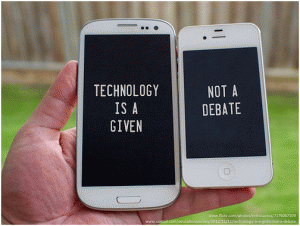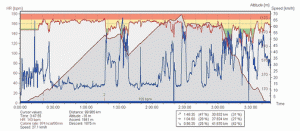
Wearable tech is sport’s next big thing
Stephen Law
Electronics Engineering Wearable Technology Wearable technologyWearable technology is undeniably a buzz-word of our time. The Apple watch and Google Glasses have between them generated enough of a media buzz to last a lifetime – even if they are yet to take the commercial world by storm. But in the field of professional sport – and increasingly amongst serious amateurs as well – the age-old sporting ethos of going with the feel and trusting your judgment is being replaced by an altogether more scientific rationale.
In 21st century sport – as elsewhere – all the intuition in the world is being shown to be no match for the power of hard numerical data. The traditionalists and conservative commentators may – such as the curling fraternity, like it, but sport is now an arena in which to wear your heart rate monitor – rather than your heart – on your sleeve.
The sporting arena is one in which technological developments have always attracted a passionate attention. Partly this is because there is an inevitable, and invariably noisy, resistance to any form of change from what we might call sporting traditionalists. On the other side of what is always an emotive equation, progressive developments that can give a competitor some form of an edge are always going to find an eager audience.
When curved ice hockey sticks emerged in the 1960s, people sat up and took notice. When Arthur Ashe started using a metal tennis racquet in the 1970s, he made headlines. And whilst the developments that are currently reshaping sports are perhaps less obvious, they are no less ground breaking. A third element to the story of sport and innovation is the publicity that high level sportsmen and women attract. Sport and marketing have a long and productive history.
Such developments inevitably can have a major impact on the sporting odds in any one-on-one contest. In a tight contest where there is little to choose between opponents, a slight technological edge may be the difference between a place in the record books and a story of what might have been. Modern sport is famously a matter of aggregating marginal gains. And, there is, of course, a huge betting industry that depends entirely on the assessment of even the most minute differences in performance. The way that bookmakers establish their prices- in effect how the whole industry operates – is now a matter of real-time data. The opta statistics in soccer are merely the most obvious means by which the intuition that once governed sport is now informed by hard numerical data to produce those odds. No wonder they so often win.
The Ralph Lauren Polo Tech shirt that was unveiled at last year’s US tennis Open is one of those easily miss-able innovations. The shirt incorporates a series of micro-sensors capable of providing a comprehensive overview of the athlete’s performance and physical state. Heart rate, rate of respiration, temperature, movement and energy output data are all relayed to an iOS feed to give anyone watching a comprehensive view not only of what the athlete has produced, but also – by deduction and analysis – a view on what he or she may have left in the tank.
The use of heart rate monitors in particular has achieved a widespread use – especially in endurance sports where heart rate is a key indicator of an athlete’s competitive status. Cyclists, for example, are now amongst the most tested and scientifically assessed sportsmen and women.
The combination of a non-contact sport in which cardiovascular efficiency is paramount to make it an obvious candidate for such testing. The fact that racers’ heart-rates are now a routine part of the televising of races points to just how far the technology has been integrated into the sport.



